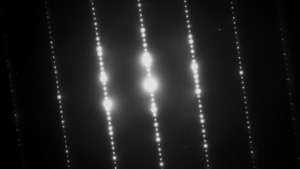
Roadmap to understanding the quantum mechanics
July 16, 2021 2 min read
In my university days I used to attend a course of quantum chemistry/mechanics, which was given in a typical post-soviet education style. All formalism, no essentials. As quantum computers are getting closer and closer to the reality by the day, I had a practical reason to finally improve my understanding of the theory. Here is my roadmap to understanding the quantum mechanics.
Lagrangian mechanics
Action and principle of minimal action: Leibniz, Maupertuis, D’Alembert’s and Hamilton’s
More of a philosophical then practical origin. Leibniz.
“Nature is parsimonious.”
, where is the total action, and is the unit of change of action through an infinitesimal period of time.
Another pretentious name for the subject is “principle of stationary action”, which indicates that the first derivative of the action turns 0, but this, generally speaking, does not guarantee that it is a minimum - it could be a saddle point or maximum. Let us not be distracted by this technicality.
TODO
Configuration space and generalized coordinates for constrained optimization
Remember, Lagrange was known for the method of Lagrange multipliers.
Example: Body, attached to a wire.
TODO
Calculus of variations
TODO
Lagrangian
Why Lagrangian was chosen the way it was chosen? 4 criteria.
TODO
Noether’s theorem
Every law of conservation (e.g. conservation of momentum, energy etc.) corresponds to some symmetry (e.g. translational symmetry of time, space etc.).
See: gauge theory (in Russian)
TODO
Hamiltonian mechanics
- Phase space vs configuration space, coordinates and their derivatives vs coordinates and momenta, Legendre transform
- Hamiltonian vs Lagrangian
- n-forms, exterior forms, differential forms, symplectic manifolds
Basics of physics for quantum mechanics
- Planck constant as quantum of action
References
- https://www.motionmountain.net/ - the best book ever in the class of “physics for dummies” books
- https://loshijosdelagrange.files.wordpress.com/2013/04/v-arnold-mathematical-methods-of-classical-mechanics-1989.pdf - classical soviet textbook on mechanics by the great V.Arnold. Don’t you ever try to read this crap directly, soviet and post-soviet mathematicians write books for themselves. Useful as a table of contents, though.
- https://pdfroom.com/books/introduction-to-topology/jb5qOml6gxQ - associated topology questions by V.Vasiliev. Again, don’t read it directly.
- https://ru.wikipedia.org/wiki/%D0%9A%D0%B0%D0%BB%D0%B8%D0%B1%D1%80%D0%BE%D0%B2%D0%BE%D1%87%D0%BD%D0%B0%D1%8F_%D0%B8%D0%BD%D0%B2%D0%B0%D1%80%D0%B8%D0%B0%D0%BD%D1%82%D0%BD%D0%BE%D1%81%D1%82%D1%8C - gauge theory page contains a table of correspondence between transforms (on which physical laws are invariant) and conservation laws
- https://www.math.uchicago.edu/~may/VIGRE/VIGRE2009/REUPapers/Gleason.pdf - transition from the axioms of classical mechanics to quantum
- https://sbseminar.wordpress.com/2012/01/09/what-is-a-symplectic-manifold-really/ - basic explanation of symplectic manifolds
- https://emilman.net.technion.ac.il/files/2017/02/JoramSeminar-2016-Talk.pdf

Written by Boris Burkov who lives in Moscow, Russia, loves to take part in development of cutting-edge technologies, reflects on how the world works and admires the giants of the past. You can follow me in Telegram
